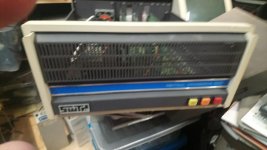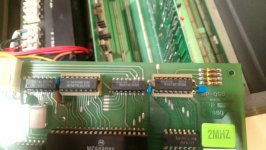ncherry
Experienced Member
I have some documents on the SWTPC DAT (Dynamic Address Translation) but I don't quite understand it. I understand that you write something to 0xFFFx and it selects one of 0xFF 4k blocks but the circuit I see reads the address lines and not the memory locations. Does anyone have a decent explanation of it's operation? Such that I can write to 0xFFFx and set the ram at xxxx to be block 0xXX.



